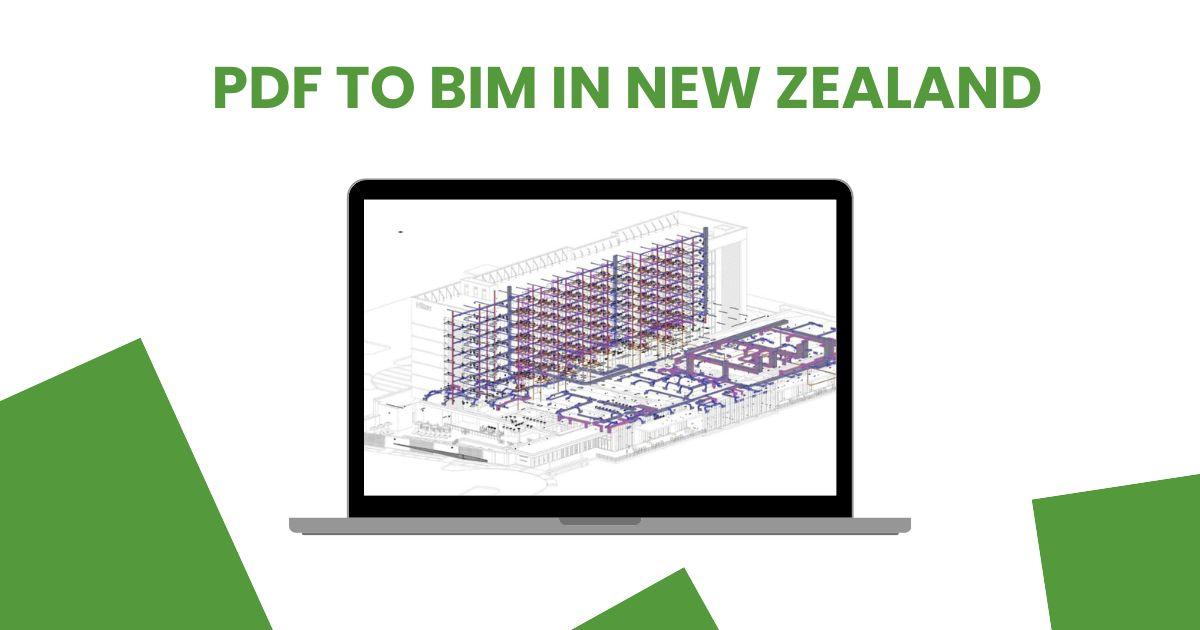PDF to BIM in New Zealand: Transforming Construction Documentation

In today’s rapidly evolving construction industry, Building Information Modeling (BIM) has become a game-changer, offering digital solutions for efficient project management and collaboration. One crucial aspect of this transformation is converting traditional PDF drawings into BIM models—a process known as PDF to BIM in New Zealand. In New Zealand, where construction projects are growing in scale and complexity, this process has gained significant traction among architects, engineers, and construction firms.
What is PDF to BIM Conversion?
PDF to BIM is the process of converting 2D PDF drawings, such as architectural plans, mechanical, electrical, and plumbing (MEP) schematics, into fully editable and intelligent 3D BIM models. Unlike static PDFs, BIM models contain detailed information about building components, enabling better planning, visualization, and collaboration.
This process is especially beneficial for older projects where original CAD files are unavailable, leaving PDFs as the only reference material.
Why PDF to BIM is Essential in New Zealand
The construction industry in New Zealand has seen a surge in projects ranging from residential complexes to commercial skyscrapers. Adopting BIM technology helps stakeholders streamline operations, reduce errors, and enhance productivity. Here’s why PDF to BIM is essential:
-
Improved Accuracy: Manual interpretation of PDFs often leads to errors in measurements and dimensions. Converting PDFs into BIM ensures precise, data-rich models.
-
Enhanced Collaboration: BIM models enable architects, engineers, and contractors to work collaboratively in a shared environment, reducing miscommunication.
-
Time and Cost Efficiency: Reworking designs due to errors in PDF drawings can be costly. BIM conversion helps save both time and money by providing accurate and editable models from the start.
-
Regulatory Compliance: Many New Zealand projects require digital submissions and compliance with local building codes. BIM models simplify this process.
The PDF to BIM Process
Converting PDF drawings to BIM is a meticulous process that requires technical expertise and advanced software. Here’s a step-by-step overview:
-
PDF Analysis: The first step involves analyzing PDF drawings to identify all the building components, dimensions, and annotations.
-
Vectorization: PDF files are raster images by default. They are vectorized to extract geometrical data, making it suitable for BIM modeling.
-
BIM Modeling: Using software like Revit, ArchiCAD, or AutoCAD, a 3D BIM model is created based on the extracted data. Each element is assigned metadata such as material type, dimensions, and specifications.
-
Quality Check: The model undergoes rigorous validation to ensure accuracy against the original PDF drawings.
-
Delivery: The final BIM model is delivered in the preferred format, ready for use in construction planning, coordination, or facilities management.
Also read: Point Cloud to Revit Modeling Services SparkBIM
Top Tools for PDF to BIM in New Zealand
Several advanced software tools facilitate seamless PDF to BIM conversion. These include:
-
Autodesk Revit: The industry standard for BIM modeling, capable of creating precise models from PDF drawings.
-
ArchiCAD: Offers robust features for architects to transform 2D PDFs into intelligent 3D models.
-
Scan to BIM Solutions: Specialized services in New Zealand can handle complex PDF conversions, including MEP and structural layouts.
Challenges and How to Overcome Them
While PDF to BIM offers numerous advantages, some challenges may arise:
-
Incomplete or Low-Quality PDFs: Low-resolution drawings can affect model accuracy. High-quality scans or vector PDFs are recommended.
-
Complex Projects: Large projects with detailed MEP layouts require expert handling. Engaging professional BIM service providers ensures quality.
-
Data Loss Risk: Manual extraction of information may result in missing details. Automated vectorization tools minimize such risks.
Choosing the Right PDF to BIM Service in New Zealand
Selecting the right service provider is crucial for successful PDF to BIM conversion. Here are some tips:
-
Look for providers with local experience in New Zealand construction standards.
-
Check if they support multiple disciplines such as architecture, structure, and MEP.
-
Ensure they offer quality checks and post-delivery support.
-
Review client testimonials and portfolio to assess reliability.
Future of PDF to BIM in New Zealand
As BIM adoption continues to rise in New Zealand, PDF to BIM conversion is expected to become a standard practice for retrofitting, renovation, and new construction projects. The integration of AI and cloud-based platforms will further streamline the conversion process, making it faster, more accurate, and cost-effective.
Conclusion
PDF to BIM conversion is transforming the construction landscape in New Zealand by turning static PDF drawings into intelligent, data-rich 3D models. It not only improves accuracy and collaboration but also ensures projects are completed efficiently, on time, and within budget. For construction companies, architects, and engineers looking to stay competitive, embracing PDF to BIM is no longer optional—it’s essential.
- Art
- Causes
- Crafts
- Dance
- Drinks
- Film
- Fitness
- Food
- Games
- Gardening
- Health
- Home
- Literature
- Music
- Networking
- Other
- Party
- Religion
- Shopping
- Sports
- Theater
- Wellness


